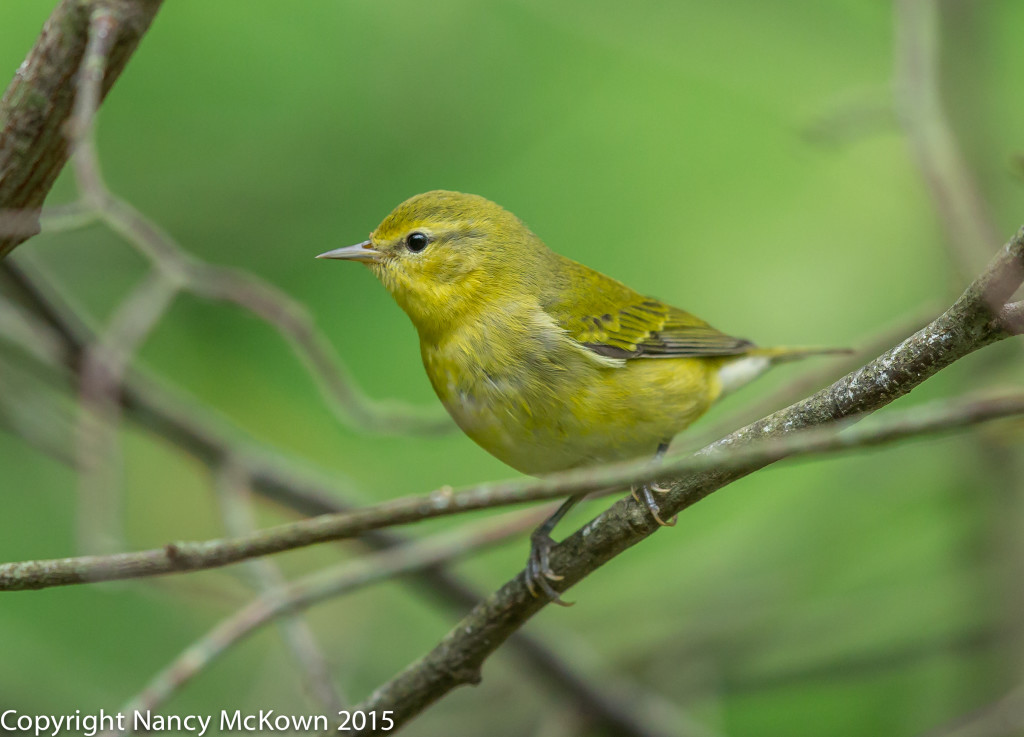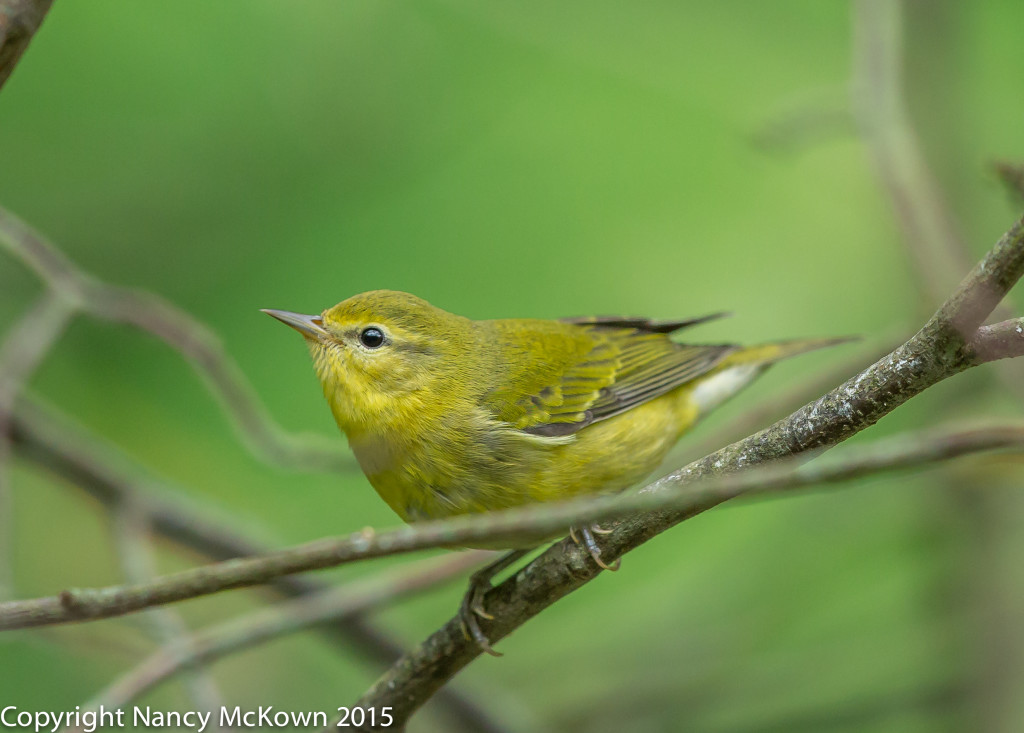Photographing a Tennessee Warbler
Out of all the warblers that visit our yard during migration, the Tennessee Warbler is our most frequent visitor. Somewhat drab, this species is best identified by the markings on its face; a thin yellowish line over the eyes and a dark line running through the eyes. Like most warblers, it breeds in the northern states and Canada and winters in South American countries like Columbia, Venezuela, and Ecuador.
Tripod Steady
The Tennessee Warblers pictured here were both methodical and swift as they probed the branches and limp leaves for insects. For this shoot, I was lucky to have a relatively bright day in our yard. I took advantage of the light by using a faster shutter speed, one where the advantages of image stabilization on a tripod would probably not be needed. As always, the weight of the lens alone is enough for me to keep my equipment mounted steadfastly on the tripod.

ISO1250; f/5; 1/500 Second
Tripod Based Movement
Most of the time, the light is low in our heavily wooded yard, forcing me to resort to shutter speeds below 1/100 second. Stabilization is essential. (Frustrating NOTE: In Michigan, there’s a 29% sunshine rate…the percent of non-cloudy sunshine hours during the winter months.- See this link.)
Tripod steady is not always enough to capture sharp images at low shutter speeds. Even the most stable of tripods can not keep the camera and lens completely still. There will always be some tripod based vibration due to shutter mirror slap, or just because I am moving about on the floor, twirling the camera and lens this way and that, and pressing the shutter button in a continuous effort to capture a pose. Also, the longer the lens I have mounted on the tripod, the more this minute vibration is magnified.
NOTE: Remote shutter releases do help stabilize cameras on tripods, but I don’t often use mine when photographing birds because I feel less in control; bird action just happens too fast.

ISO1250; f/5; 1/500 Second
Enter MODE III – IS and Tripod Use
With previous IS Canon lenses I have owned, I had to remember to manually turn off the image stabilization function when I used a tripod, otherwise it would pick up the tripod’s inherent vibrations and erratically try to correct. It was not uncommon to end up with more blurriness on the images instead of less.
Since low shutter speeds are pretty essential to increase the amount of light available for exposure, tripod movement was a problem. Clever engineers at Canon’s R&D helped to minimize those obstacles by creating a secondary image stabilizing mode…. one made specifically for tripod use.
Canon IS lenses with Mode III functionality are engineered to sense when the lens is on a tripod. The purpose is not to disable the IS feature, but to identify and compensate for those slight tripod movements when the shutter is set between 1/30 second and 1 minute – the settings at which the camera is very vulnerable to producing blurry photos. NOTE: Image Stabilization on the tripod is automatically disabled if the shutter speed is set for 1 second or longer.
Remember, birds are constantly moving – and IS will not compensate on that end.
To read more about Image Stabilization, press this link.
It is easy to mistake the Tennessee Warbler for another drabbish warbler…. the Orange Crowned Warbler. To see this bird in action, press this link.
It has been my observation that accuracy, consistency, logic and convention do not appear to matter when naming birds. Read more about this here.








